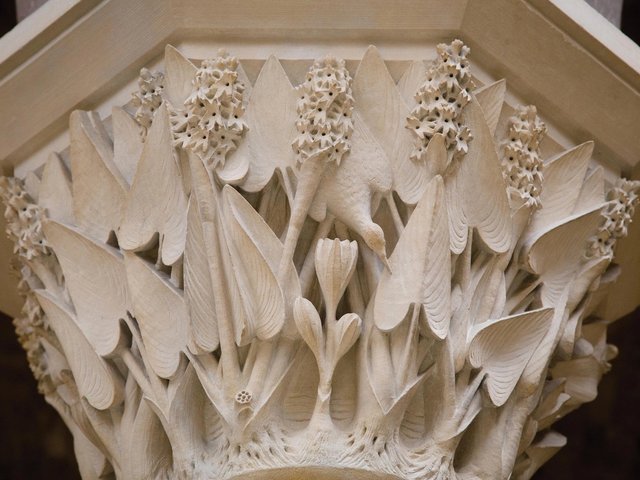Much of Allen Staley’s career has been leading up to this subject. Indeed, he says so himself in his introduction. His book unravels the decade of artistic confusion, innovation and experimentation that followed the dispersal of the pre-Raphaelite brothers and the emergence of that slippery concept, the aesthetic movement. The aesthetic movement certainly existed; Walter Hamilton’s modest—and confused—1882 account The Aesthetic Movement in England tried to resolve the problems of identity that dogged the movement, then as now. Reconciling the claims of late pre-Raphaelitism with Japonisme, “Chinamania” and the Victorian High Renaissance requires the agility and experience that Staley brings to this discussion.
Crucial to his idea of the emerging aesthetic project is the engagement of its most prominent exponents with decoration and the applied arts; Staley’s first chapter surveys the craze for painted furniture that dominated decorative design in the late 1850s and early 1860s. We see the pre-Raphaelite Brotherhood unravel and a regrouping under Rossetti and his new admirers, Edward Burne-Jones and William Morris. In parallel, the architect William Burges assembled a group of future aesthetes to decorate his Gothic Revival furniture with paintings. The importance of painted furniture was reflected in purchases at the 1862 International Exhibition by the newly founded South Kensington Museum. What followed was the “artistic” interior, with decoration and works of art forming an integrated whole. Aesthetic painted furniture derives from these 1860s experiments.
With this group of young talent assembled—and the divide between fine and applied art blurred—the following chapters deal with 11 artists (with Burges making a round dozen), each in their own way trying to break the mould of British genre and story-telling. The precisely chosen cast of characters reveals a network of friendships, and a wealth of contemporary criticism adds eye-witness authentication. By paying attention to subject matter, the recurrence of themes (music unites almost all of these artists) and the artists’ own words, Staley challenges traditional interpretations of the best known works.
Rossetti’s development during the 1860s is a fascinating case study. His later “aesthetic” subjects have a somewhat monotonous dependence on the Venetian model established at that time. It did Frederick Sandys no good to be so much under Rossetti’s influence, although his superior technical skill raised his game. Simeon Solomon was drawn into Burges’s net even before he met Rossetti. His career was effectively ended by his arrest for gross indecency in 1873. Albert Moore plays with similar ideas to Solomon, but with long-term effect. Staley’s long engagement with Whistler provides new insights. Coming almost at midway, he acts as a pivot in relation to the whole group. This is where the network reaches its greatest density and where it is put under its greatest strain with the libel action, Whistler v Ruskin, following the 1877 Grosvenor Gallery exhibition. Among the remaining artists, if Watts, Leighton and Burne-Jones have received plenty of attention, Edward Poynter has not; he alone lacks a monographic exhibition or a biography. Staley does not duck the coldness of Poynter’s work, while showing his development of ideas implicit in the new painting.
Throughout, Millais is a tantalising presence, important to this new direction in painting. He missed out on the group activities that drove the second wave of pre-Raphaelitism; in the 1850s, his marriage to Effie (then Mrs Ruskin) and his election to associate of the Royal Academy pulled him away from his founding brothers. His chapter comes in a postscript. He was not much involved with decorative arts and on these grounds this position is arguably correct. Holman Hunt is treated in the same way.
Although the chapters deal with individuals, they cry out to be read consecutively—the temptation to flit from one preferred artist to another should be resisted because the narrative drives a web of connections. This is a deeply pondered academic study, but free of jargon and full of wit. It is a route map into the enigma of fine art in the aesthetic movement, both for what it is and for what it is not.
Allen Staley, The New Painting of the 1860s: Between the Pre-Raphaelites and the Aesthetic Movement (Yale University Press, 400pp, £50)


